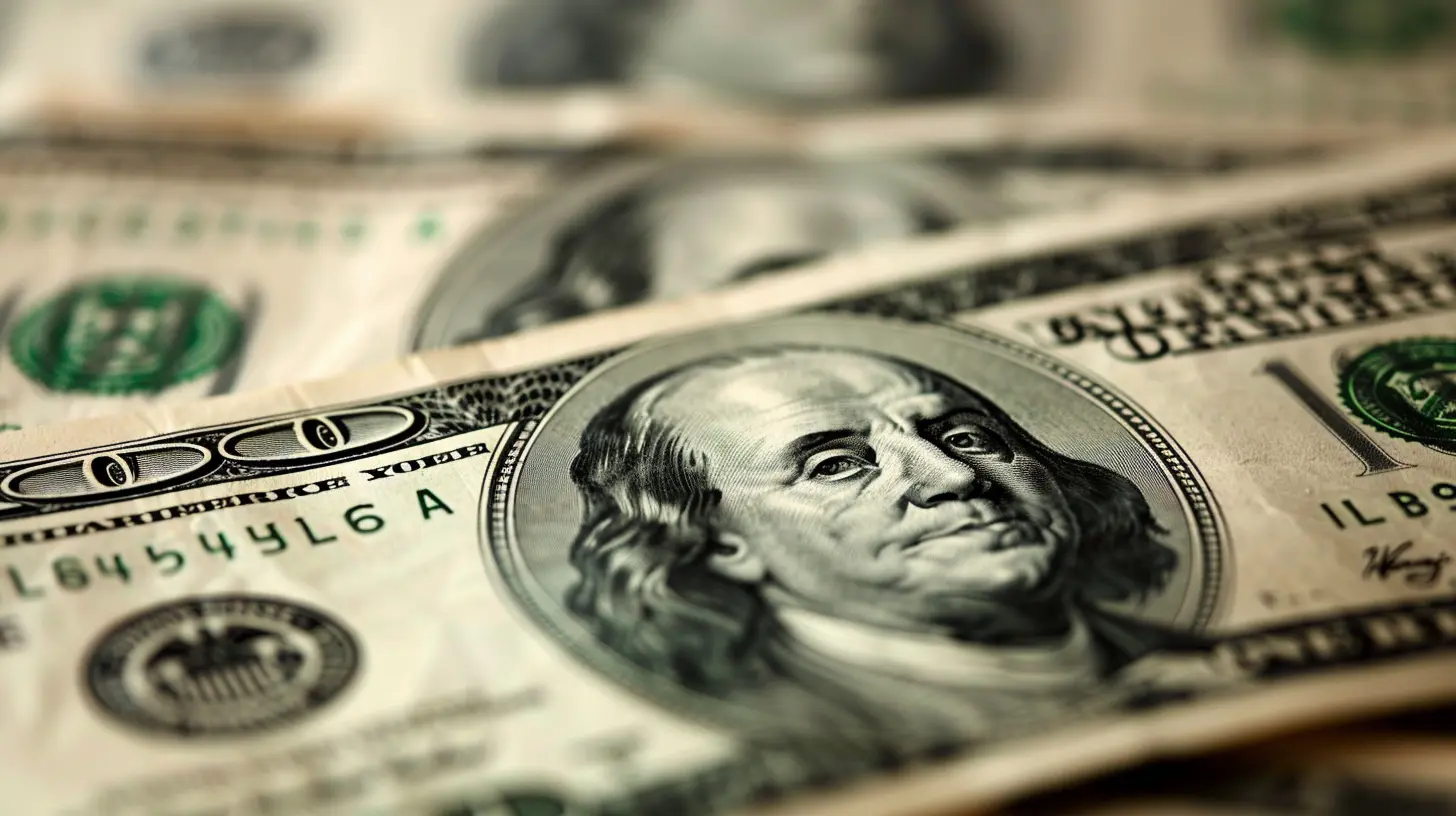How Capital Gains Can Affect Your Overall Tax Bracket
20 July 2025
Ah, taxes—the not-so-glamorous side of building wealth. Most of us think about tax season with a mix of dread and confusion, especially when we start tiptoeing into the world of investments. Buy low, sell high—that’s the dream, right? But what happens when that big win nudges you into a higher tax bracket? That’s where capital gains sneak onto the stage, and suddenly the applause from your portfolio quiets down a bit.
Welcome to the lyrical tale of how capital gains can affect your overall tax bracket! 🌟
Let’s break it down, no jargon, no suits—just straight-up human talk.
What Are Capital Gains, Anyway?
Before we dive into how they rock your tax bracket, let’s unpack what capital gains really are.You know that cool stock you bought last year? Or the real estate you invested in five years ago? When you sell that asset for more than you paid, the money you made is called a capital gain. Pretty simple, right?
- If you held the asset for over a year, congrats! That’s a long-term capital gain.
- If you sold within a year, that’s short-term—and it’s taxed differently.
Think of it like wine. The longer you let it age, the better the flavor (and the lower the tax rate). Short-term gains? That’s like uncorking it too early—you're hit with higher taxes.
The Two Tax Lanes: Ordinary Income vs Capital Gains
Here's where things get interesting.Ordinary income—your salary, freelance gigs, side hustles—all of that is taxed based on tax brackets. The more you earn, the more you pay, thanks to our progressive tax system.
Meanwhile, long-term capital gains have their own cozy corner in the tax code. They’re usually taxed at 0%, 15%, or 20%, depending on how much income you make.
Now here’s the twist: capital gains are stacked on top of your ordinary income.
Imagine your tax bracket is a layered cake. Your salary fills up the first few layers. When you cash in a capital gain, it pours on top like icing—sweet, but it might just tilt the whole cake into a higher tax level.
So… Do Capital Gains Push You Into a Higher Tax Bracket?
Great question. Let’s cut through the noise.Technically, capital gains themselves don’t move your actual tax bracket for your regular income. But they can increase your overall taxable income, which may:
- Make some of your capital gains taxed at a higher rate (15% might jump to 20%)
- Cause portions of your regular income to bump into a higher federal tax bracket
- Trigger additional taxes like the Net Investment Income Tax (NIIT) (that’s an extra sneaky 3.8%)
Think of capital gains like overpacking your suitcase. It doesn’t change the size of the suitcase, but suddenly, there’s no room for anything else. And you might have to pay extra just to get that bag on the plane.
Let’s Paint a Picture: A Capital Gains Tax Scenario
Let’s say you’re single and you earn $50,000 per year.You’ve been smart with your investments (high five! 🖐) and you sell a stock for a $40,000 long-term gain.
Your total taxable income now becomes $90,000.
Here’s what happens:
- The first $50,000 of your income gets taxed like normal.
- The next $40,000—your capital gain—sits on top.
- Because you’re still under certain thresholds, that gain might be taxed at 15%, not 0%.
- If the gain was big enough, it might even push part of your other income into a higher bracket.
Moral of the story? That “free money” from your investment isn’t as free as it looks. Uncle Sam wants his slice.
The Tax Brackets: Where the Magic Happens (or Not)
Here’s a quick look at 2024’s long-term capital gains tax brackets for single filers:| Capital Gains Rate | Taxable Income (Single) |
|------------------------|----------------------------------------|
| 0% | Up to $44,625 |
| 15% | $44,626 – $492,300 |
| 20% | Over $492,300 |
For married couples filing jointly, those numbers are higher, but the principle is the same.
If your capital gains push your total income over one of these thresholds, congratulations—you’ve leveled up. But also...taxes.
Let’s Talk About Short-Term Capital Gains
Ugh, short-term gains. These get zero VIP treatment.If you sell an asset within a year of buying it, guess what? That gain is taxed like your ordinary income.
So if your job already puts you in the 24% bracket, your short-term gain gets slapped with 24% too.
It’s like bringing chips to a potluck and still getting charged for the buffet. No breaks, no mercy.
Planning to flip stocks or houses quickly? Just know the IRS is watching—and ready to take a bigger piece.
Capital Gains and the "Stacking Rule"
Here’s a little-known nugget: the IRS uses what’s called a stacking rule to decide how your income and gains are taxed.In layman’s terms? Your income stacks up like a layer cake.
1. Ordinary income fills the bottom layers
2. Qualified dividends and capital gains go on top
3. Each piece hits the bracket it falls into
This is why your $40,000 capital gain on top of $100,000 salary might be taxed at 15%, not 0%. You already used up the lower tiers.
Don’t worry if that makes your brain hurt. Just know this: the order of income matters, and it determines how much you actually owe.
Ways Capital Gains Can Trigger Other Taxes
Remember the NIIT I mentioned earlier? (Net Investment Income Tax—it even sounds annoying.)If your modified adjusted gross income (MAGI) crosses certain thresholds, you may owe an extra 3.8% on top of your capital gains tax.
In 2024, here’s when the NIIT kicks in:
- $200,000 for singles
- $250,000 for married couples filing jointly
So yeah—capital gains can do more than just nudge your tax bracket. They can open the floodgates for a whole new set of taxes.
Smart Moves to Keep Your Tax Bracket in Check
Alright, enough doom and gloom. Let’s talk strategy. 🧠Here are a few tricks to keep your capital gains from messing with your tax bracket:
1. Harvest Losses Like a Pro
If you sold one stock at a gain, sell another that’s at a loss. It’s called tax-loss harvesting, and it’s a legit way to offset your gains with your losses.Imagine it like one kid cleaning up after the other’s mess.
2. Hold for the Long Haul
Short-term gains are taxed like a scolding. Long-term gains are rewarded with lower rates. If you can, hold investments longer than a year to soften the tax hit.3. Time Your Sales
Planning a big sell? Think about your income timing. If next year you plan to retire or take a sabbatical, your income might drop—perfect time to cash out some gains at a lower tax rate.Timing matters. A few months can mean thousands saved.
4. Use Retirement Accounts Wisely
Invest through IRAs or 401(k)s when possible. Those accounts defer capital gains taxes—meaning you’re not taxed until way later (and maybe at a lower rate).It’s like hitting the snooze button on taxes.
5. Donate Appreciated Assets
Feeling philanthropic? Donate stocks directly to charity. You could avoid paying capital gains altogether and get a deduction to boot.It’s a win-win-win.
Final Thoughts: Capital Gains Are a Double-Edged Sword
Sure, capital gains are a sign you’re doing something right. Your portfolio grew. Your assets appreciated. That means you’re investing wisely—kudos to you.But when it comes to taxes? Those gains don’t live in a bubble. They can tip the scale and push your total income into new territory. That means bigger bills and fewer breaks.
So should you avoid capital gains altogether? Of course not!
Just understand how they affect your overall tax bracket—and work with your accountant (or learn like a pro) to plan smarter.
Because honestly? The best kind of money is the kind you get to keep.
all images in this post were generated using AI tools
Category:
Capital GainsAuthor:

Knight Barrett
Discussion
rate this article
2 comments
Maggie Benson
Capital gains are like that sneaky friend who always shows up uninvited to the tax party. You think it’s just a casual hangout, but suddenly, everyone’s looking at your income like, ‘Who invited this guy?’ Time to budget for surprises!
November 25, 2025 at 12:29 PM
Jane Price
What's the real impact?
August 3, 2025 at 4:05 AM

Knight Barrett
The real impact of capital gains on your tax bracket can significantly increase your tax liability, pushing you into a higher bracket and affecting your overall financial planning.


